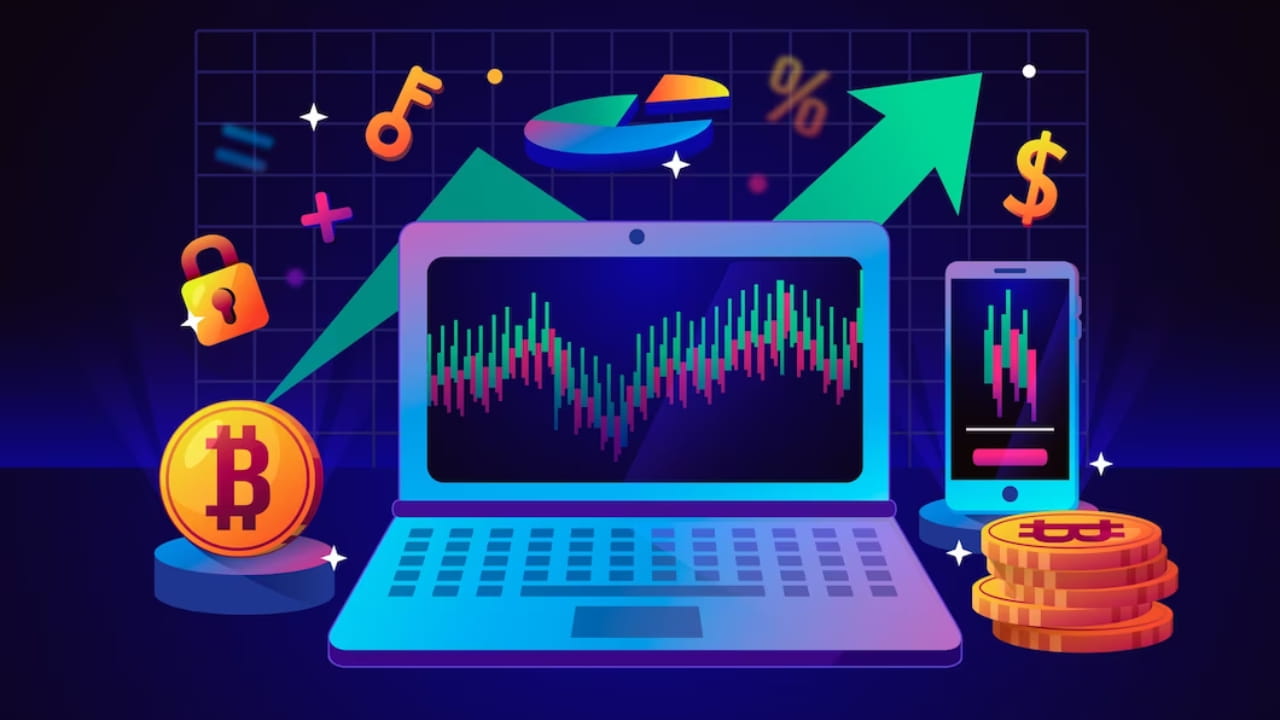The convergence of blockchain technology and virtual worlds has created an unprecedented opportunity for cryptocurrency metaverse token investment. As digital economies continue to flourish, investors are increasingly turning their attention to metaverse tokens that power these immersive virtual environments. These digital assets represent more than just speculative investments—they’re the foundation of entire virtual economies where users can buy, sell, and trade virtual real estate, digital assets, and experiences.
The metaverse investment landscape has evolved dramatically since 2021, with institutional investors and retail traders alike recognizing the potential of these digital world tokens. Major tech companies have invested billions in metaverse development, creating a robust ecosystem where cryptocurrency metaverse token investment opportunities continue to expand. Understanding how to navigate this complex market requires knowledge of both traditional investment principles and the unique characteristics of virtual world economies.
Understanding the Metaverse Investment Landscape
What Are Metaverse Tokens?
Metaverse tokens are cryptocurrencies that serve as the native currency within virtual worlds and digital ecosystems. These tokens facilitate transactions, governance, and economic activities within their respective platforms. Unlike traditional cryptocurrencies that primarily function as digital money, metaverse tokens are deeply integrated into the gaming, social, and economic mechanics of virtual environments.
The utility of these tokens extends beyond simple transactions. They often provide holders with voting rights in platform governance, access to exclusive content, and the ability to participate in the platform’s economic growth. This multi-faceted utility creates intrinsic value that goes beyond speculative trading, making it attractive for long-term investment strategies.
The Evolution of Virtual World Economics
Virtual economies have transformed from simple in-game currencies to sophisticated financial ecosystems. Early online games featured basic economic systems where players could trade virtual items for game currency. Today’s metaverse platforms have evolved into complex economies with real-world value, where virtual assets can be worth thousands or even millions of dollars.
The introduction of blockchain technology has revolutionized virtual economies by providing true ownership of digital assets. Players can now own, trade, and monetize their virtual possessions across different platforms, creating unprecedented opportunities for wealth generation within digital worlds.
Top Cryptocurrency Metaverse Token Investment Opportunities
Decentraland (MANA)
Decentraland stands as one of the pioneering platforms in the metaverse space, offering users the ability to purchase, develop, and monetize virtual real estate. The platform’s native token, MANA, serves as the primary currency for all transactions within the virtual world. Users can buy virtual land parcels, create experiences, and participate in a thriving digital economy.
The investment potential of MANA extends beyond simple token appreciation. Landowners can generate passive income through virtual real estate rentals, advertising revenue, and hosting paid events. The platform’s governance model also allows MANA holders to vote on important platform decisions, giving investors a voice in the platform’s future development.
The Sandbox (SAND)
The Sandbox has emerged as a leading gaming-focused metaverse platform, combining elements of gaming, creativity, and decentralized finance. The SAND token powers the platform’s economy, enabling users to purchase virtual assets, participate in governance, and stake tokens for additional rewards.
What sets The Sandbox apart is its focus on user-generated content and play-to-earn mechanics. Players can create, share, and monetize their gaming experiences, creating multiple revenue streams for creative individuals. The platform’s partnership with major brands and celebrities has also increased its visibility and adoption potential.
Axie Infinity (AXS)
Axie Infinity revolutionized the play-to-earn gaming model, demonstrating how blockchain games can create sustainable income opportunities for players. The AXS token serves multiple functions within the ecosystem, including governance, staking rewards, and in-game purchases.
The platform’s success has inspired numerous other play-to-earn projects, establishing it as a benchmark for the industry. Despite facing challenges and market volatility, Axie Infinity continues to innovate and expand its ecosystem, making it a compelling long-term investment consideration.
Enjin Coin (ENJ)
Enjin Coin takes a unique approach to metaverse tokens by focusing on the creation and management of non-fungible tokens (NFTs) across multiple gaming platforms. The ENJ token is used to mint, trade, and enhance NFTs, creating a cross-platform ecosystem for digital assets.
The platform’s technology allows game developers to easily integrate blockchain features into their games, potentially creating a network effect as more developers adopt the Enjin ecosystem. This broad utility across multiple platforms makes ENJ an interesting diversification play within the metaverse investment space.
Investment Strategies for Metaverse Tokens

Long-Term Holding Strategy
A buy-and-hold approach can be effective for metaverse tokens, particularly for platforms with strong fundamentals and growing user bases. This strategy involves purchasing tokens and holding them for extended periods, allowing investors to benefit from long-term platform growth and token appreciation.
Successful long-term holding requires careful platform selection based on factors such as development activity, user engagement, partnership announcements, and tokenomics. Investors should focus on platforms with sustainable business models and clear paths to monetization.
Diversification Across Platforms
Rather than concentrating investments in a single metaverse token, diversification across multiple platforms can help reduce risk and increase exposure to different aspects of the metaverse economy. This approach allows investors to participate in various virtual world ecosystems while minimizing the impact of any single platform’s performance.
Diversification can include investments in gaming-focused platforms, social metaverse environments, virtual real estate projects, and infrastructure tokens that support the broader metaverse ecosystem. This strategy helps capture growth across different sectors of the virtual economy.
Active Trading and Market Timing
For more experienced investors, active trading strategies can potentially generate higher returns through market timing and technical analysis. Metaverse tokens often exhibit high volatility, creating opportunities for skilled traders to profit from price fluctuations.
Active trading requires significant time commitment, market knowledge, and risk management skills. Traders must stay informed about platform developments, market sentiment, and broader cryptocurrency trends to make informed decisions.
Risk Management in Metaverse Token Investments
Market Volatility Considerations
Metaverse tokens are subject to high volatility, with prices often experiencing significant swings based on market sentiment, platform developments, and broader cryptocurrency market conditions. Investors must be prepared for substantial price fluctuations and should only invest amounts they can afford to lose.
Understanding the factors that drive token prices can help investors make more informed decisions. These factors include user adoption rates, platform updates, partnership announcements, and overall market sentiment toward the metaverse sector.
Platform-Specific Risks
Each metaverse platform faces unique risks that can impact token values. These risks include technical issues, regulatory challenges, competition from other platforms, and changes in user preferences. Investors should thoroughly research platforms before investing and monitor ongoing developments.
Platform risks can be mitigated through diversification and careful due diligence. Investors should evaluate factors such as the development team’s track record, platform security measures, and the strength of the community supporting the project.
Regulatory Uncertainty
The regulatory landscape for cryptocurrencies and metaverse tokens continues to evolve, with governments worldwide developing frameworks for digital assets. Regulatory changes can significantly impact token values and platform operations, creating uncertainty for investors.
Staying informed about regulatory developments and understanding how they might affect specific platforms is crucial for risk management. Investors should be prepared for potential regulatory changes and their impact on the metaverse investment landscape.
Future Outlook for Metaverse Token Investments
Technological Advancements
The metaverse space continues to benefit from rapid technological advancement, including improvements in virtual reality, augmented reality, and blockchain technology. These developments are making virtual worlds more immersive and accessible, potentially driving increased adoption and investment opportunities.
Emerging technologies such as artificial intelligence, 5G networks, and advanced graphics processing are likely to enhance the metaverse experience, creating new use cases and investment opportunities. Investors should monitor these technological trends and their potential impact on metaverse platforms.
Institutional Adoption
Growing institutional interest in metaverse investments is likely to bring increased legitimacy and capital to the sector. Major corporations, investment funds, and financial institutions are beginning to explore metaverse opportunities, potentially driving significant growth in token values.
Institutional adoption can provide stability and reduce volatility in metaverse token markets. As more traditional financial institutions offer metaverse investment products, retail investors may gain easier access to these opportunities through established investment vehicles.
Integration with Traditional Industries
The metaverse is increasingly being integrated with traditional industries, including retail, entertainment, education, and real estate. This integration creates new use cases for metaverse tokens and expands their potential value proposition beyond gaming and virtual worlds.
As traditional businesses establish virtual presences and explore metaverse marketing opportunities, the demand for metaverse tokens may increase. This trend could drive long-term growth in the sector and create new investment opportunities.
How to Get Started with Metaverse Token Investments
Research and Education
Before investing in metaverse tokens, investors should thoroughly educate themselves about the technology, platforms, and investment risks involved. This includes understanding blockchain technology, virtual world economics, and the specific characteristics of different metaverse platforms.
Educational resources include whitepapers, platform documentation, community forums, and cryptocurrency investment guides. Investors should also follow industry news and developments to stay informed about market trends and opportunities.
Choosing the Right Exchange
Selecting a reputable cryptocurrency exchange is crucial for safe and efficient metaverse token trading. Factors to consider include security measures, supported tokens, trading fees, and user interface quality. Popular exchanges that support metaverse tokens include Binance, Coinbase, and KuCoin.
Investors should also consider using decentralized exchanges (DEXs) for accessing newer or less common metaverse tokens. DEXs can provide access to a wider range of tokens but may require additional technical knowledge and security precautions.
Wallet Security and Management
Proper wallet security is essential for protecting metaverse token investments. Investors should use hardware wallets or secure software wallets to store their tokens and implement strong security practices such as two-factor authentication and regular backups.
Understanding different wallet types and their security features is important for making informed decisions about token storage. Cold storage options provide the highest security for long-term holdings, while hot wallets offer convenience for active trading.
Conclusion
The world of cryptocurrency metaverse token investment offers compelling opportunities for investors willing to navigate the complexities of virtual world economies. As the metaverse continues to evolve and mature, early investors who conduct thorough research and implement sound investment strategies may benefit from the growth of these digital ecosystems.
Success in metaverse token investing requires a combination of technological understanding, market awareness, and prudent risk management. By staying informed about platform developments, diversifying across multiple projects, and maintaining a long-term perspective, investors can position themselves to capitalize on the continued growth of virtual world economies.
FAQs
What is cryptocurrency metaverse token investment?
Cryptocurrency metaverse token investment involves purchasing digital tokens that power virtual worlds and metaverse platforms. These tokens serve as currency within virtual economies and often provide holders with governance rights, access to exclusive content, and the ability to participate in platform economics.
Which metaverse tokens are best for beginners?
For beginners, established platforms like Decentraland (MANA), The Sandbox (SAND), and Enjin Coin (ENJ) offer good starting points due to their strong communities, clear use cases, and relatively stable development. These platforms have proven track records and provide multiple ways to generate value from token holdings.
How much should I invest in metaverse tokens?
Investment amounts should be based on individual risk tolerance and financial situation. As with all cryptocurrency investments, experts recommend only investing what you can afford to lose. Many investors start with small amounts (1-5% of their portfolio) to gain experience before increasing their exposure.
Are metaverse token investments profitable?
Metaverse token investments can be profitable, but they also carry significant risks. Success depends on factors such as platform adoption, market conditions, and investment timing. While some early investors have achieved substantial returns, past performance doesn’t guarantee future results.
What are the main risks of metaverse token investing?
Main risks include high volatility, platform failure, regulatory uncertainty, technological obsolescence, and market speculation. Investors should carefully consider these risks and implement proper risk management strategies, including diversification and position sizing.

